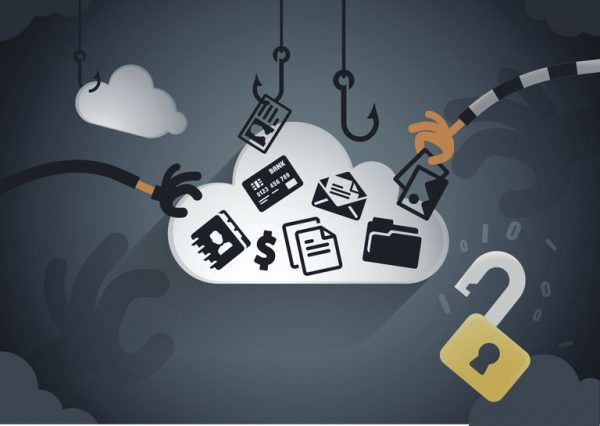What is Email Spoofing?
Email spoofing is a fraudulent act where a forgery of an email header takes place. In the message, it appears to come from a legit origin. Many people may not check the different resources on the email they receive. These individuals may be the prime targets of phishing and scam campaigns. Once the recipient clicks a link in the email and sends critical information over to the sender, the receiver might now become the victim of various criminal acts.
How Does Email Spoofing Work?
The act of spoofing email addresses may not be as complicated as it may seem. One of the main requirements of this act is a Simple Mail Transfer Protocol (SMTP) server. This component lets people send an email. Also, the other qualification for the deed to happen is an appropriate email software. These two elements are common factors needed to send a standard email.
Many email and web hosting providers may even provide a built-in SMTP server for customers. With this server active, many people can send emails from different devices, as long as the individual loads the SMTP server.
People who spoof emails copy original templates from legit sources like banks and important people. When the recipient replies with specific information or clicks on a link on the spoofed email, the sender may manipulate the data according to their desires. Thus, savvy Internet users should follow specific countermeasures to ensure their information won’t fall into the wrong hands. For instance, you can search for ways on how to prevent email spoofing in Office 365 if this app is your primary email platform.
What is an Example of a Spoofed Email?
For example, there might be a person who wants to spoof Satya Nadella, the Chief Executive Officer (CEO) of Microsoft. Next, the message may contain a letter like this:
“Hi! Our system found that your recent purchase of one of our Microsoft products produced an error during checkout. Kindly reply with your credit card number along with the three digits found at the back of the card for reconfirmation.”
It may seem inconspicuous at first. However, the Card Security Code (CSC) is a critical component to the security of your credit card account. If you send that piece of information to someone you don’t know, then the receiver may make unwarranted purchases using your credit card details.
Aside from replying to an email, the simple act of clicking on a suspicious link in the message might spoof information coming from the user’s device. Sophisticated hacking tools might scan a computer or mobile device with saved data once the user clicks on a link inside the email. Thus, you don’t need to reply to the email for your private information to be leaked to the email sender.
What are the Reasons for Email Spoofing?
A person may undertake acts of email spoofing for various reasons, like to:
- Spam email addresses
- Hide the sender’s true identity
- Pretend to be another person (for online scams)
- Tarnish the image of another individual
- Gather private information (for phishing operations)
Individuals may undergo email spoofing acts for reasons that may seem minor at first. For example, the sender may mail another person with a spoofed email with the intent to remain anonymous. In this message, there might be no links or threatening notes attached. However, the message might contain sent content meant to destroy the credibility of another entity.
How to Combat Email Spoofing?
Perhaps the easiest way to combat email spoofing is never to open suspicious-looking messages coming from unknown sources. However, if you accidentally open a skeptical message, don’t click on any links or send a reply back to the sender.
Many email platforms now employ algorithms to recognize spoofed messages as spam emails. Thus, you may not worry about spoofed emails reaching your primary inbox.
The following methods are other ways you can protect yourself from email spoofing:
1. Sender Policy Framework (SPF)
Albeit it shares the same abbreviation with the Sun Protection Factor of skincare products, SPF in Information Technology (IT) won’t protect you from the sun’s rays. Instead, it’s a solution that helps validate email sources received by a system.
Email platforms may use SPF frameworks to assist in blocking unsolicited messages from unknown third-party sources. However, the way particular SPF algorithms work may already be an outdated approach. SPF policies require users to take action like clicking on a link or replying to the message. Therefore, spoofed emails that can phish information even without the receiver taking any action besides opening the email may still take place.
2. Use the Priority Inbox
Many modern email platforms use sophisticated approaches to blocking emails meant for scamming or phishing people. For instance, you can use your email service provider’s Priority Inbox with the spam filter set to maximum. Depending on your mail provider, the Priority Inbox may help in adding an extra layer of security to SPF protocols.
3. Read Message Headers
If you accidentally opened an email from an unknown sender, don’t click on any links or reply to the message. First, read the message’s headers. Then, consider using an IP lookup tool to make sure the email comes from a legit source.
4. Avoid Downloading Unfamiliar Attachments
One of the emails you receive may come with a strange file. Don’t let your curiosity get the best of you in this regard. These may be executable files which might activate upon download. Hence, once it enters your computer or mobile device’s system, the unknown program might start phishing for data in your unit.
5. File a Doman-Based Message Authentication, Reporting, and Conformance (DMARC) Record
You may file DMARC records for unsolicited messages coming from unknown sources if you own a domain. Also, make sure to update your domain’s records with your web and email hosting provider’s registrar. Sending a DMARC record will let the receiver know that your email address comes with an SPF or Domain Key Identified Mail (DKIM) protection. It may not seem like much, but it can still act as a deterrent for any similar emails.
6. Install a Browser Extension
Specific browser extensions exist that act as an extra layer of protection for email accounts. Again, only download browser apps from legit sources. For example, if you’re using Google Chrome, only download these security extensions from the Chrome Web Store.
Learn to recognize email scams and phishing operations the moment these messages appear in your inbox. An excellent way to prevent yourself from any possible email spoofing acts is never to open these messages in the first place. You can implement additional security measures if you share an email address with another individual.


















